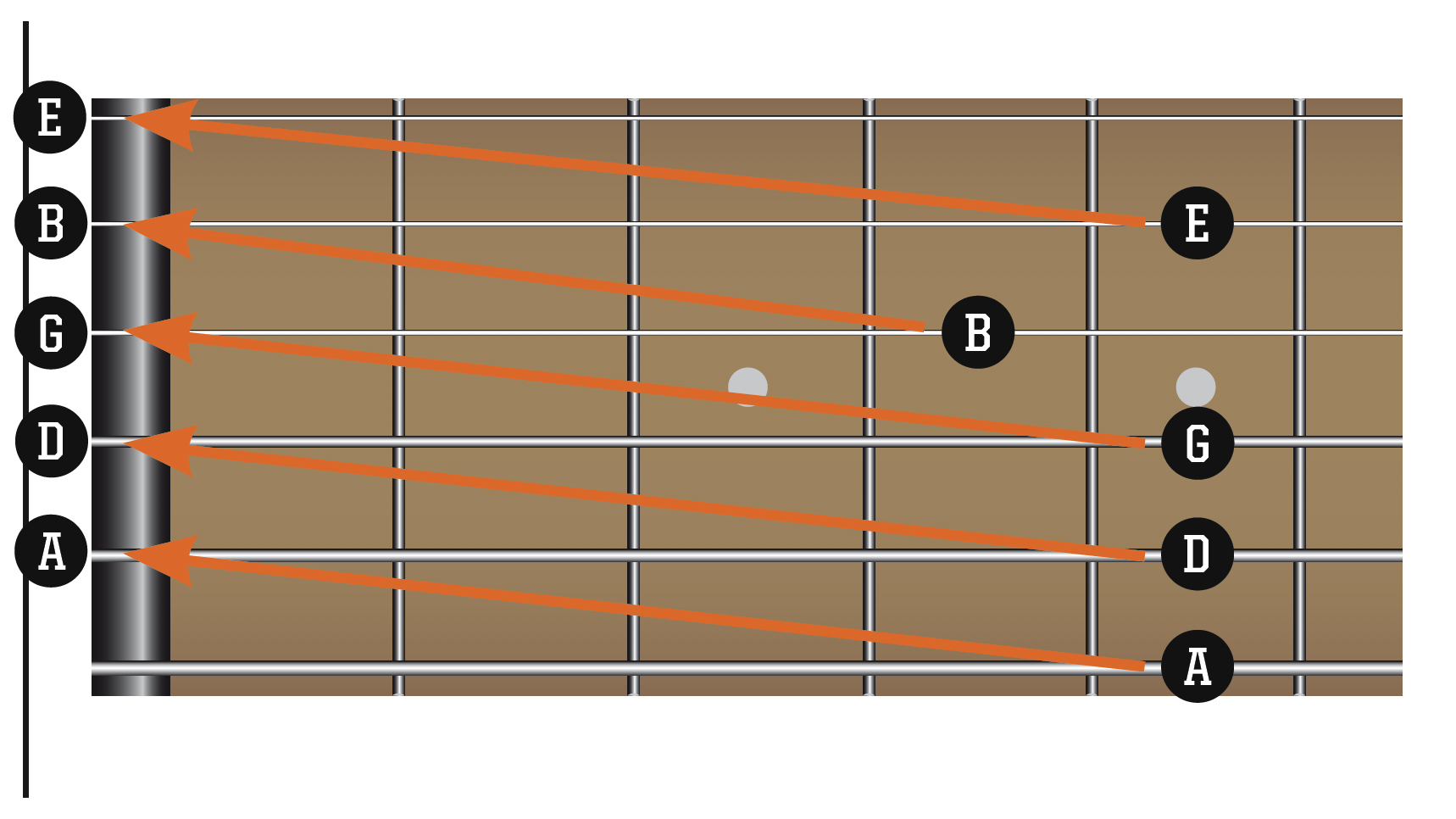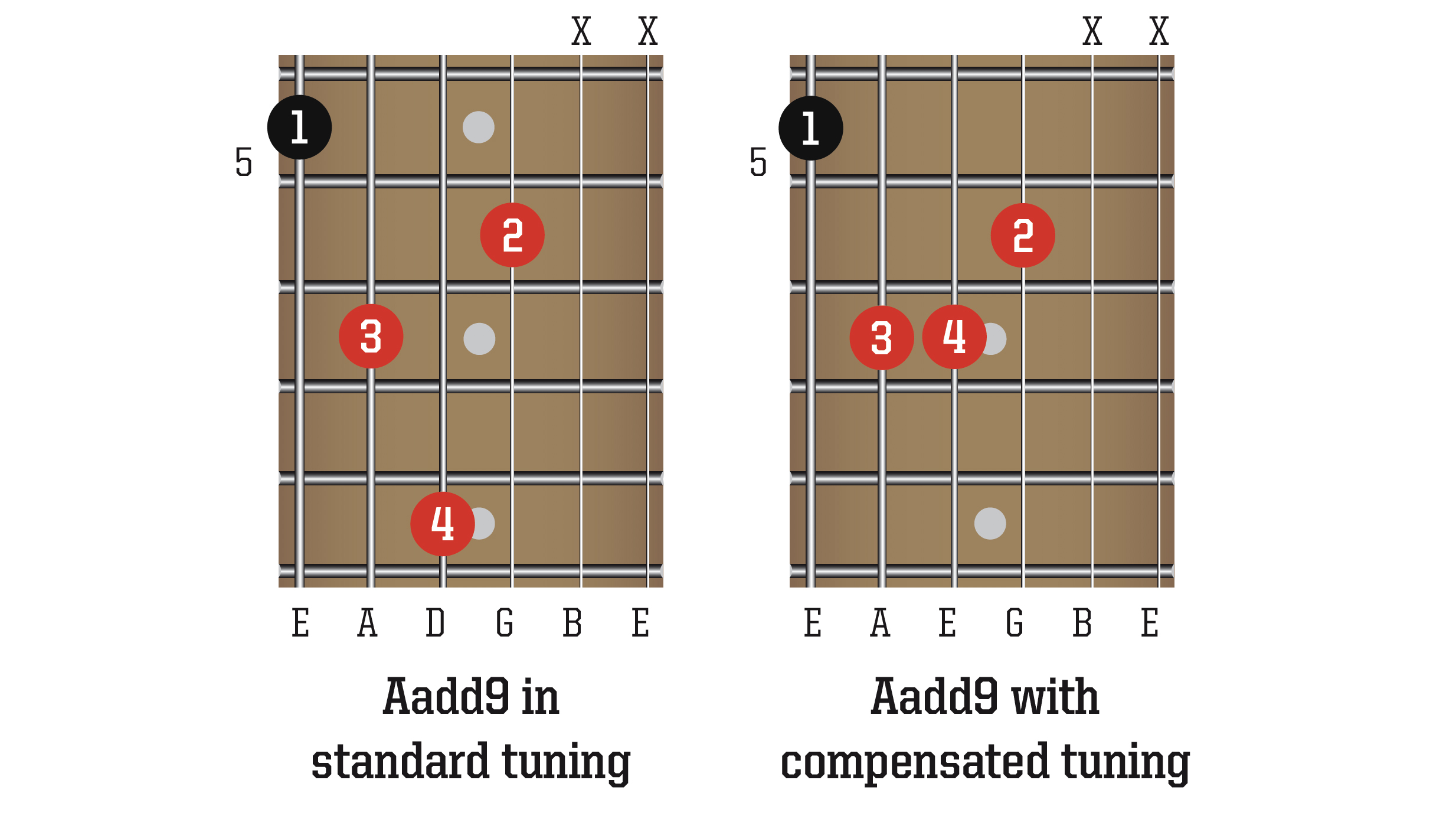9 guitar tuning hacks
Get your guitar in tune then get creative with some inspiring alternative tunings and tips

There's huge inspiration in your choice of acoustic and electric guitar, effects pedals and guitar amps. Even the guitar pick you choose plays a part, but before all that there's the huge world of creative possibilities from guitar tunings.
Obviously, your first step should be investing in a quality guitar tuner, but we even have a tip for you to tune without one…
1. Use Open D for one-finger major chords

Change your tuning from standard to open D (D A D F# A D) and your guitar’s open strings produce the bright sound of a D major chord – that’s because the notes of a D chord are D, F# and A. It also means you can play major chords simply by barring across all six strings with your first finger. Easy!
Retune the first, second, third and sixth strings. The fourth and fifth strings are the same as standard.

2. No tuner? No worries!

Take a look at the picture above and you’ll see that open strings are tuned to the 5th fret on the adjacent lower string. The only exception is the second string, which is tuned to the 4th fret of the third string.
To tune up, simply choose the string you think is already most in tune, then adjust the strings on either side – and keep going till you’ve tuned every string. Needless to say you’ll also develop your ear doing it this way.
3. Slide into open G tuning

Just like open D, the idea here is to tune to the notes of a major chord, G this time, to give you a brighter sound and easy one-finger major barre chords.
Want all the hottest music and gear news, reviews, deals, features and more, direct to your inbox? Sign up here.
Open G (D G D G B D) was a favourite of slide player Duane Allman, and Keith Richards uses his own five-string version of the tuning, removing the lowest string from his guitar all together – a vital part of the Rolling Stones’ sound. Retune only your first, fifth and sixth strings.
4. A tuning trick for more accurate intonation

Due to some very complicated physics at play, no guitar is ever 100 per cent in tune at every note on the fretboard – and when using the 5th fret tuning method mentioned in the last hack you may find the higher notes on your instrument sound less ‘in tune’.
If a song you play is based higher up the neck, try tuning with notes in that range of the fretboard for more accurate intonation. Your tuner picks up the notes whichever fret you’re on.
5. Fix minor problems with open D minor tuning

Open D tuning has one key drawback: if you’re playing one-finger major chords it can be difficult to adapt the shape when a minor chord crops up. The solution? Tune to open D minor instead – this allows you to play one-finger minor chords that are much easier to adapt when you want to play a major chord.
If you’re in open D, simply lower the third string a further semitone to get to D minor.

6. Drop D: the one-finger powerchord trick

Make powerchords easier by tuning to drop D. All you do is lower your sixth string by two semitones (the same as two frets) from E to D. You’ll be able to play one-finger powerchords by barring across the three bass strings at the same fret. Soundgarden’s Outshined is a great drop D riff.

7. Cut through a mix with Nashville tuning

If you need a tighter, brighter sound to make strummed chords cut through a mix, Nashville tuning might just do the trick. Simply replace the four bass strings on your guitar with their ‘octave-up’ counterparts from a 12-string set.
This removes some of the muddy-sounding bass frequencies, helping your sound to cut through. Take a similar, simpler approach if you prefer and replace only the third string.
8. Drop C# and lower dropped tunings

Drop C# is exactly the same tuning as our old friend drop D but in this case with all six strings tuned one semitone lower than drop D. Remember the drop C# pattern and you can also work out drop C (CGCFAD), drop B (B F# B E G# C#), drop Bb (Bb F Bb Eb G C) and drop A (A E A D F# B) by lowering all six strings by a further semitone each time.
If your strings buzz try using heavier strings to counter the lower string tension.
9. Retune to make difficult chords easier

Andy Summers’s ‘add9’ chord in Every Breath You Take is an infamous finger-twister. Simply raise the fourth string by two semitones (two frets) so the D note becomes an E and the riff is instantly playable with simpler ‘E-shape’ barre chords.
Learn 9 alternate guitar tunings to inspire your playing
Total Guitar is Europe's best-selling guitar magazine.
Every month we feature interviews with the biggest names and hottest new acts in guitar land, plus Guest Lessons from the stars.
Finally, our Rocked & Rated section is the place to go for reviews, round-ups and help setting up your guitars and gear.
Subscribe: http://bit.ly/totalguitar
